Becoming a Learner Driver
Click on the sections below to find out more...


The Learner Driver must:
-
Be 17 years old to hold a licence to drive a car (Category B) but if you receive the higher rate mobility component of DLA (Disability Living Allowance) or the enhanced rate mobility component of PIP (Personal Independence Payment) you may hold a licence to drive a car (Category B) from the age of 16.
-
Have a valid provisional driving licence (for the type of vehicle being used - manual or automatic).
-
Be Insured to drive the vehicle.
-
Ensure the vehicle is in a safe and legal condition.
-
Meet the legal minimum eyesight standards, to do this you must be able to read an “old style” number plate, from a minimum distance of 20.5 metres (approximately 67 feet or 5 car lengths). If reading a “new style” number plate (these letters are narrower) you must be able to read it from a minimum distance of 20 metres (approximately 66 feet).
-
Only drive when supervised by a person who is at least 21 years old and has a valid driving licence, which they have held for at least three years.
-
Put L Plates (or D Plates in Wales) on the front and rear of their vehicle.
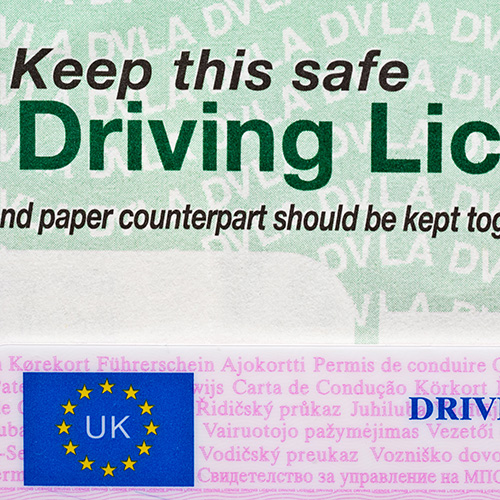

You can apply for your provisional driving licence when you're 15 years and 9 months old, but you can't have your first driving lesson on the road until you're actually 17.
You can learn to drive a car when you are 16 if you receive the higher rate mobility component of DLA or the enhanced rate mobility component of PIP.
You can apply for a provisional licence online or by going to your local post office and completing the D1 application form.
The easiest way to apply is through the provisional driving licence page on the official GOV.UK website.
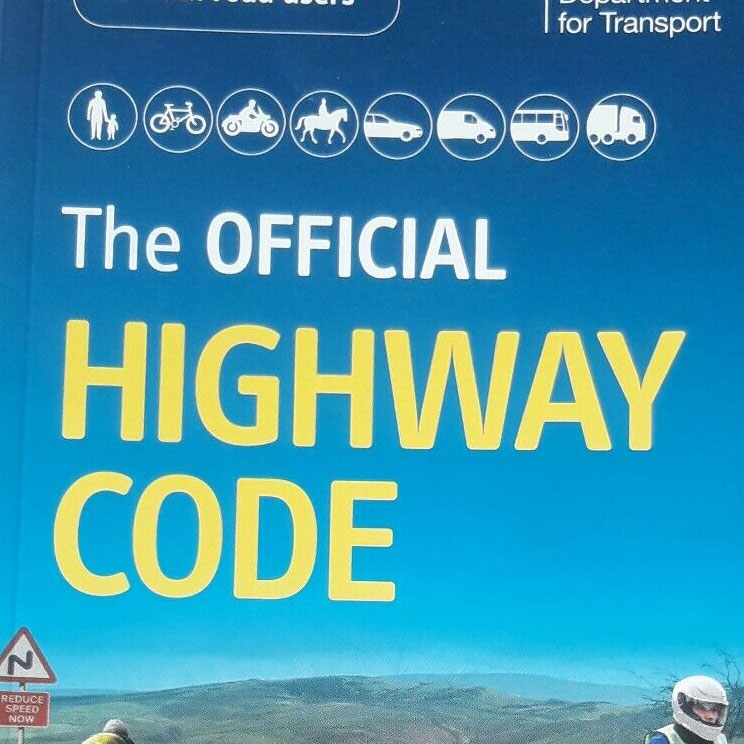

With a provisional licence you can:
-
Begin the process of learning to drive a car at the age of 17.
-
Begin the process of learning to drive a car at the age of 16 if you receive the higher rate mobility component of DLA or the enhanced rate mobility component of PIP.
You cannot:
-
Drive in a car without a driving instructor or someone else who fits the legal criteria.
To get a provisional licence you will need:
-
To be able to read a number plate from 20 metres away if it’s a “new style” number plate or 20.5 metres away if it’s an “old style” one.
-
Provide a legitimate form of ID (normally a passport).
-
Provide addresses for where you have lived over the last three years.
-
Pay £34 by credit or debit card.
At the same time, it’s a good idea to start reading the Highway Code and begin familiarising yourself with it in preparation for taking your theory test.
Do not use an unofficial website to apply for your licence, as you may pay more than necessary, and your application might not even be submitted.
You must have physically received your licence before driving on the road. Once you have received it, you can drive a car on the road under supervision and while displaying L Plates (or D Plates in Wales) but not on motorways unless you are accompanied by a professional instructor.


If you are having private supervision, you the learner driver must be insured to drive the vehicle you are using for private practice.
Make sure the insurers know your age and that you are a learner driver before you drive the car, or you will be breaking the law and the police can issue a fixed penalty of £300 and 6 penalty points.
The police also have the power to seize the vehicle.
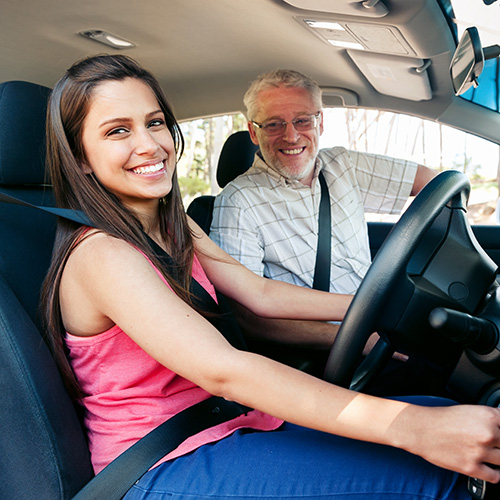

The Supervising Driver must:
-
Be at least 21 years old.
-
Have a full driving licence (for the type of vehicle being used - manual or automatic).
-
Have held that valid licence for a minimum of three years.
-
Ensure the car is in a safe and legal condition.
-
Meet the minimum eyesight standards.
-
Ensure the car displays L Plates (or D Plates in Wales) when a learner is driving.
-
Not receive any payment for supervising the learner (unless they are an approved Driving Instructor).
-
Comply with road traffic laws, such as not drinking and driving or using a hand-held mobile phone, even though they are in the passenger seat.
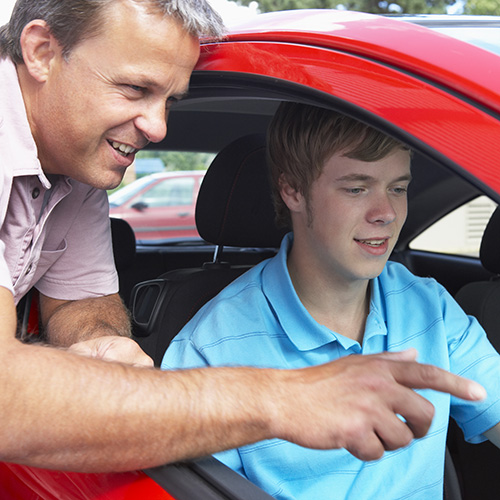

Anyone who is supervising a learner driver must be at least 21 years old.
This is because they are likely to have sufficient driving experience, and significantly more than the learner.
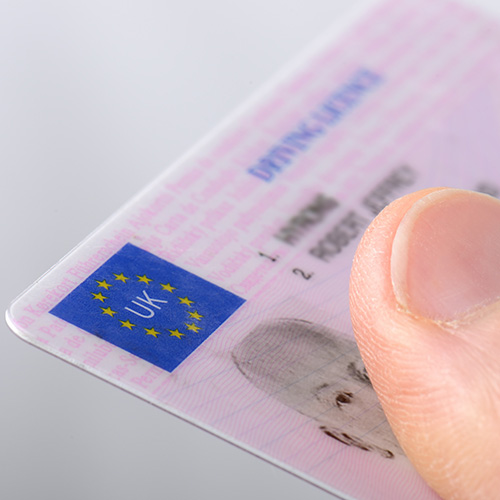

The law also requires that the supervising driver has held their full driving licence for at least three years. This prevents someone who has only just passed their test and has not had time to gain sufficient driving experience, from supervising a learner.
If the supervising driver has ever been disqualified from driving, the period of the disqualification does not count towards the 3 years requirement, because the licence was not valid while they were disqualified.
Example: If you gained your full driving licence 3 years ago, but were disqualified for 6 months at some point during the last 3 years, you will only have had a valid licence for 2 years and 6 months. In this case, you cannot yet supervise a learner driver.
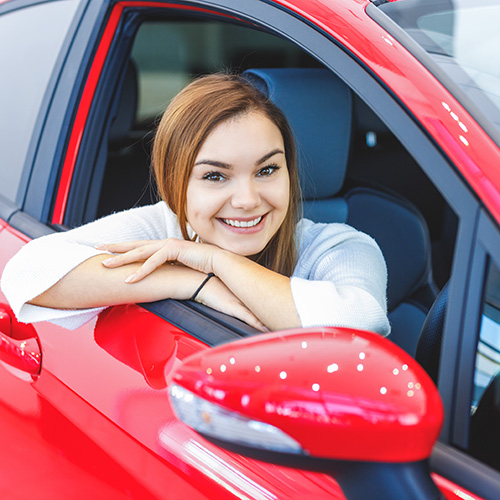

If the vehicle is owned by the supervising driver or by another person, make sure that the motor insurance policy includes the learner.
Take note of any restrictions. For example, some insurance companies require the supervising driver to be over 25 years old.
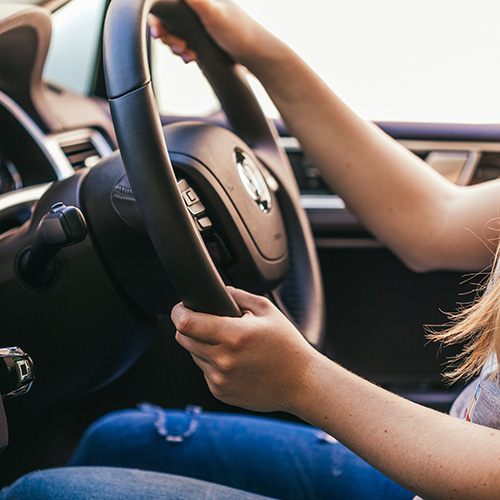

If the vehicle is owned by the learner, the supervising driver will usually be covered on the learner driver's own insurance and, therefore, does not have to be insured separately.
However, check the details before starting to supervise the learner, and whether the insurer has set any restrictions, such as requiring the supervising driver to be over 25 years old.
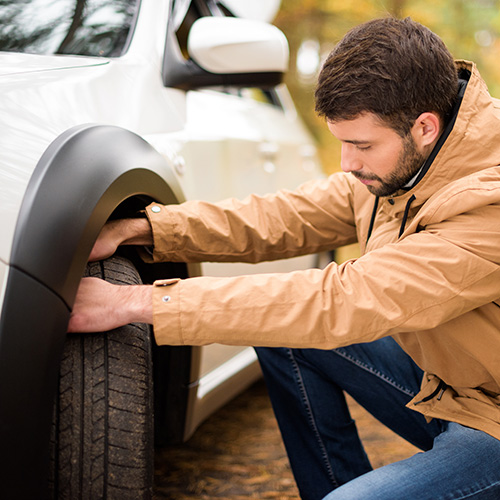

Ensure that the car is in a safe and road legal condition, including being properly registered, taxed and has a valid MOT. It is a good idea to have it checked and serviced before starting private practice.
You must also ensure that L Plates (or D Plates in Wales) are displayed on the front and rear of the vehicle whenever the learner is driving. Remember to remove them after each practice drive.
Check:
-
Tyres are undamaged (no cuts or bulges), are at the correct pressure and have enough tread depth. The legal minimum is 1.6mm, but above 3mm gives much shorter braking distances in the wet.
-
There are no signs of vehicle damage.
-
Oil, coolant and windscreen wash levels are correct (check when cold).
-
You know the correct type of fuel for the vehicle.
-
Brakes are in good working order.
-
Lights and indicators are in good working order.
-
Windscreen and windows are not damaged.
-
Washers and wipers are in good working order.
-
Mirrors are correctly positioned.
If you're not sure how to do these checks, read the vehicle's handbook, and/or ask someone to show you.


Finding a good driving instructor is invaluable.
While it might be tempting to save money and ask a friend or relative to teach you, an expert will have a much better idea of what’s expected from you in the test. They will also have the ability to improve your driving skills over time and save you from heated arguments with your friends and family in the process.
Also, a fully qualified instructor will have their own car to teach you in, which will have dual controls.
Dual controls are where the instructor has their own clutch and brake pedals in the passenger footwell and are able to take over or help out with the controls, if they feel you need it at any point.
The most important thing when picking an instructor is choosing someone who makes you feel comfortable and happy in the driver's seat, remember you may be spending potentially 45 hours or more in a car together!
The best way of finding a good instructor is through recommendations, from friends or family members etc.
If you’re a young driver, you’ll probably know lots of people who are learning to drive at the same time.
If you do choose a friend or family member they will have to be over the age of 21 and have held a licence for at least three years.
Should I learn in a manual or an automatic?
When looking for an instructor consider what car they use. Is it a manual or an automatic?
While automatics are easier to drive, you won’t legally be able to drive a manual if you pass in an automatic. It may be easier to learn in an automatic and a quicker way to passing your driving test, but then you are restricted to only driving an automatic vehicle.
Unless you’ve got disabilities preventing you from driving a manual, a manual licence will offer you more flexibility in the future and you can normally find much cheaper manual cars for your first car.
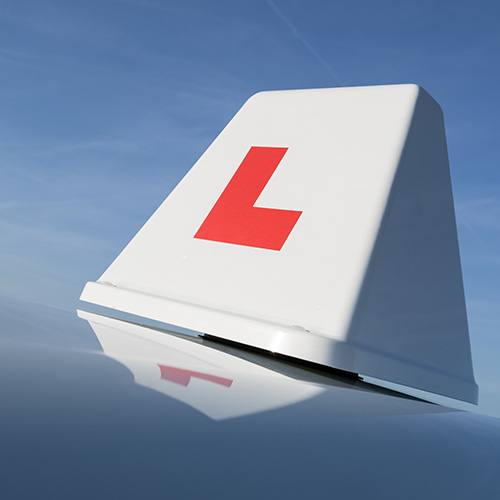

Anyone you pay to teach you to drive must be either:
-
A qualified and approved driving instructor (ADI).
-
A trainee driving instructor.
Check your Instructors badge
Instructors have to display a badge in their windscreen to prove they’re registered with the Driver and Vehicle Standards Agency (DVSA). They display:
-
A green badge if they’re a qualified driving instructor.
-
A pink badge if they’re a trainee.
You can report someone to DVSA if they charge for driving lessons and are not a qualified driving instructor or trainee.
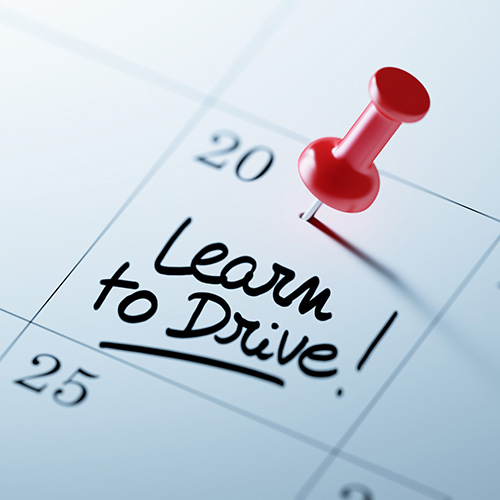

Starting driving lessons may be the first time you have been in the driver's seat of a car. With other cars on the road too, this can feel a little daunting.
But the right instructor will make you feel at ease and guide you through it step by step.
If you have some experience of driving, your first lesson would consist of an assessment on your ability to drive, then plan a structured way forward to get to test standard depending on experience.
If you have no experience of driving, then to begin with, you will start off on very quiet roads or an industrial estate if possible, where there won't be too much traffic. This is to gain confidence and build up your control of the vehicle, in a safe and controlled environment.
How many lessons should I have?
The average learner driver requires around 45 hours of lessons with an instructor and 20 hours of private practice with a relative or friend if possible before being test-ready, but everyone learns at different rates and this all depends on previous experience and how quick you learn.
This is only an average and don’t feel you have to compare your experience to anyone else’s, as we all learn at different paces.
Some people may take longer to get to test standard than others, it shouldn’t be treated as a competition. Some people take longer to feel comfortable behind the wheel than others and the most important thing is to take the test when you feel you are ready. Never feel pressured by someone else, into taking your test!!
Your instructor will let you know how you are progressing from week to week and you will see the difference in your driving development as the lessons progress. Once you have covered all the different topics of driving required to make you a safe and competent driver, there may be a few things that need to be fine-tuned to get you up to test standard. Your instructor will then start to discuss booking your practical driving test with you, but most of the time you will feel you are ready for it too - when that time comes, you can then have the discussion on how best to prepare for your test.
Intensive driving courses
Intensive driving courses are a great way to get you through the learning process quicker, if you have the time and the flexibility to do more than one lesson a week. However, they are not for everyone, as not everyone has the flexibility and funds available to learn this way.
The aim of an intensive driving course, is to get you through the training process quicker and usually takes 6 to 10 weeks to complete depending on your experience and the rate at which you learn.
People usually get an intensive driving course confused with a crash course, a crash course is completed within a 5-day period (Monday to Friday) and a practical driving test on the last day of the course. You are required to have passed your theory test before you take a crash course, to enable you to take the practical test on the final day of the course.
Learning this way is great for someone who already has plenty of knowledge and experience of driving, but not so great for a new inexperienced learner as it’s an awful amount of information to retain, in a very short amount of time.
Crash courses usually come with the slogan “Guaranteed Pass”, however no one can guarantee you will pass your practical driving test, no matter how much experience of driving you may have. Every practical test is slightly different with regards to what happens on each one, because of the road conditions, other road users and pedestrian activity. This changes constantly, so each experience will be somewhat different even though the syllabus remains the same. There is no guarantee each individual test candidate will deal correctly with each individual situation they may come across regardless of experience, so again no one can guarantee you will pass your test.
What should I take with me on my first lesson?
On your first driving lesson you will need to bring with you:
-
Suitable footwear.
-
Your provisional driving licence.
-
Glasses if needed, to read a number plate from the required distance.
-
A positive, can-do attitude.
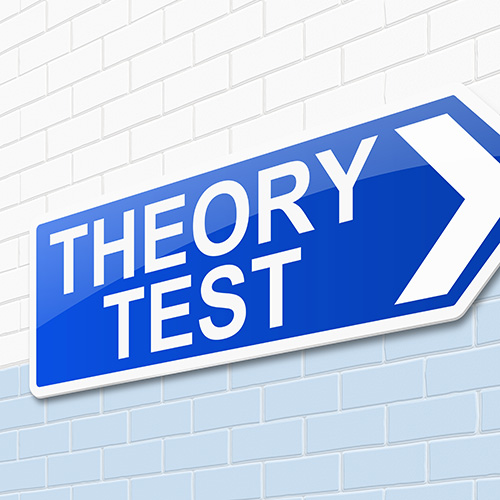

Passing your theory test is the first of 2 tests needed to be passed to allow you to drive on the road legally and without supervision.
You can take your theory test at your own discretion, however it is vitally important that you ensure you study sufficiently, to enable you to get it passed. Always remember the saying “if you fail to prepare, then you must prepare to fail”.
How to book your theory test and how much will it cost?
You can book your theory test either:
-
online, through the book your theory test section of the official GOV.UK website.
-
or over the telephone using a debit or credit card on the number 0300 200 1122.
It costs £23 and there is usually a waiting time of a week or two depending on demand.
To find your local test centre, check GOV.UK website.
What does the theory test consist of?
A multiple choice test
The first part of the theory test is a computer-based multiple-choice test consisting of 50 questions on the Highway Code.
You’ll have 57 minutes to complete it and you need to get 43 out of 50 questions correct to pass it.
Make sure you’ve prepared and you should stand a very good chance of passing, remember the saying again “if you fail to prepare, then you must prepare to fail”.
A hazard perception test
Once you’ve completed the theory test, you’ll then have to take a hazard perception test.
This uses 14 video clips, and you’ll have to click the mouse whenever you spot a hazard developing.
There are 15 hazards to spot, with at least one on each clip and two in one of the clips. The hazard clips are silent.
When you spot a hazard developing, you can click either the left or right mouse button.
The earlier you spot it the more points you will get. You can score between zero and five on each hazard clip, with a maximum of 75 overall and to pass, you need a score of 44 or above.
The hazard perception test lasts twenty minutes, and you don't get the chance to go back and repeat any of the clips – just like real-life driving where you don't get a second chance.
You’ll find out straight away whether you’ve passed both tests – and once you have, you’ll be able to then book your practical test. Remember once you have passed the theory test, it is only valid for 2 years to the date of passing.
If your theory test runs out before you have passed your practical driving test, then you would have to resit the theory test again, before being allowed to resit the practical driving test.
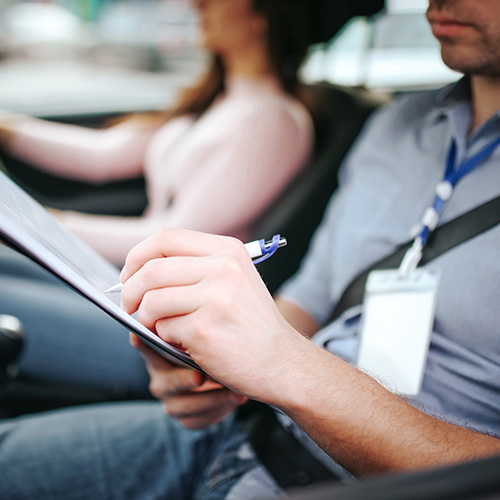

How to book the practical driving test and how much does it cost?
Before booking your test, ensure you have the following items:
-
Your UK driving licence number (found on your provisional licence).
-
You’re driving instructor’s personal reference number - this is to check if they’re available should you wish them to attend the test with you - which is often recommended.
-
A credit or debit card.
To book your practical test online visit the GOV.UK website.
There is also an option on the GOV.UK page to look for driving test cancellations this will allow you to potentially book an earlier appointment if someone else cancels their test before yours.
Unfortunately, there is no alert system for this, so if you are eagerly awaiting the chance to book one of these 'cancellation appointments' you will need to check their availability regularly, even daily or hourly.
What do you need to take with you for your driving test?
You’ll need to bring your:
-
Theory test pass certificate.
-
Provisional driving licence.
-
Glasses if needed, to read a number plate from the required distance.
-
A positive attitude.
How long does the test last?
The driving test lasts around 40 minutes however this may vary depending on traffic and road conditions.
You’ll drive for around 70 minutes if you’re taking an extended driving test, because you’ve been banned from driving.
An extended test consists of the same thing, its just almost twice as long meaning you have twice as much time to fail!
What does the driving test involve?
The practical test makes sure you can drive confidently and safely in different road and traffic conditions and that you know The Highway Code (and can show this by the way you drive).
You can find out more by looking at the GOV.UK website such as what documents you’ll need to bring to the test, what happens during the test and what sort of car you can use for your test.
There are 5 parts to the driving test:
-
An eyesight check.
-
Show me, tell me’ vehicle safety questions.
-
General driving ability.
-
Reversing your vehicle.
-
Independent driving.
The test is the same for both manual and automatic cars.
Eyesight Check
At the beginning of the driving test, the examiner will do an eyesight check and you must be able to read a number plate from 20 metres away if it’s a “new style” number plate or 20.5 metres away if it’s an “old style” one.
New-style number plates start with 2 letters followed by 2 numbers, such as BR01 OKS.
If you fail the eyesight check, the test will then end and unfortunately you fail.
Show me Tell me Questions
Before you begin the driving part of the test, you will be asked a question about safety checks on your car. Check these out on the DVSA’s “Show me Tell me” video on YouTube below.
You'll be asked a second 'show me' question (for example, showing how to put the windows up and down using the car controls) later, while you're driving.
General driving ability
You’ll drive in various road and traffic conditions, but not on motorways.
The examiner will give you directions that you should follow. Driving test routes are not published, so you cannot check them before your test.
Pulling over at the side of the road
You’ll be asked to pull over and pull away during your test, including:
-
Normal stops at the side of the road.
-
Pulling out from behind a parked vehicle.
-
A hill-start.
You might also be asked to carry out an emergency stop.
Reversing your vehicle
The examiner will ask you to do one of the following exercises:
-
Parallel park at the side of the road.
-
Park in a parking bay - either by driving in and reversing out, or reversing in and driving out (the examiner will tell you which you have to do).
-
Pull up on the right-hand side of the road, reverse back for around 2 car lengths and then re-join the traffic.
Independent driving
For about 20 minutes of the test you’ll drive independently. Your examiner will ask you to follow directions or signs to reach a destination or you may be asked to follow a sat-nav. This is so you can show you’ll be able to drive safely on your own once you’ve passed your test.
4 out of 5 candidates will be asked to follow directions from a sat-nav provided by the examiner and 1 out of 5 driving tests won't use a sat-nav and you'll be asked to follow traffic signs instead.
The examiner will tell you which one you have to follow.
They’ll set the sat-nav up for you if this is the option selected.
You cannot use your own sat-nav.
If you cannot see traffic signs
If you cannot see a traffic sign (for example, because it’s covered by trees), the examiner will give you directions until you can see the next one.
Going off the route
The examiner will not give you a fault for taking a wrong turn.
They’ll help you get back on the route if you do.
If you make mistakes during your test
You can carry on if you make a mistake. It might not affect your test result if it’s not serious.
Your driving examiner will direct you back to the driving test centre if the mistake you made means you’ve failed. The test will end early.
Other people at your test
You’re driving examiner’s supervisor might sit in on your test to watch your examiner’s performance. If you refuse, your test can be cancelled and you’ll have to book another test.
Instructor on test
You’re allowed to take your instructor with you on your test, or anyone who’s over the age of 16.
It’s useful to have your instructor or the person who trained you to drive with you as they can help you work on any problems the examiner notices, either to help you pass next time or if you want to keep learning after you pass your test.
Having someone you know with you can also help you to stay calm during the test.
However, sometimes this can also go the other way and put you off. It’s not the normal situation your used to and having someone else in the back seat, also adds extra weight to the car and it may affect the way the car drives.
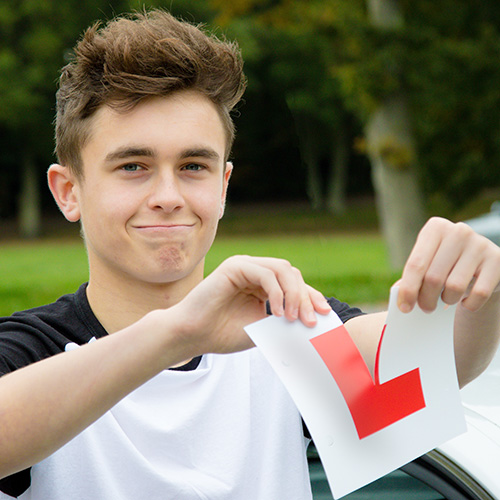

You won’t find out how you’ve done until you get back to the test centre, when the examiner will discuss his/her observations with you.
There are 3 types of faults you can make:
-
A dangerous fault - this involves actual danger to you, the examiner, the public or property.
-
A serious fault - something potentially dangerous.
-
A driving fault - this is not potentially dangerous, but if you keep making the same fault, it could become a serious fault.
Pass mark
You’ll pass your driving test if you make:
-
No more than 15 driving faults (sometimes called ‘minors’).
-
No serious or dangerous faults (sometimes called ‘majors’).
What happens if you pass your test?
The examiner will:
-
Tell you what faults you made, if any.
-
Give you a pass certificate.
-
Ask you if you want your full licence to be sent to you automatically - give the examiner your provisional licence if you want to do this.
Apply for your full driving licence within 2 years of passing your test if you do not want to get your licence automatically.
When you can start driving?
You can start driving straight away when you’ve passed your test. You do not need to wait for your full licence to arrive.
Contact DVLA if your full licence has not arrived 3 weeks after you applied for it.
What happens if you do not pass your test?
The examiner will tell you what faults you made.
If you wanted to try again, you would have to book another test.
Can you appeal your driving test?
You can appeal if you think your examiner did not follow the regulations when they carried out your test.
Your test result cannot be changed, but you might get a free retest if your appeal is successful.
How do you appeal?
Contact your local magistrate’s court within 6 months to appeal in England and Wales.



